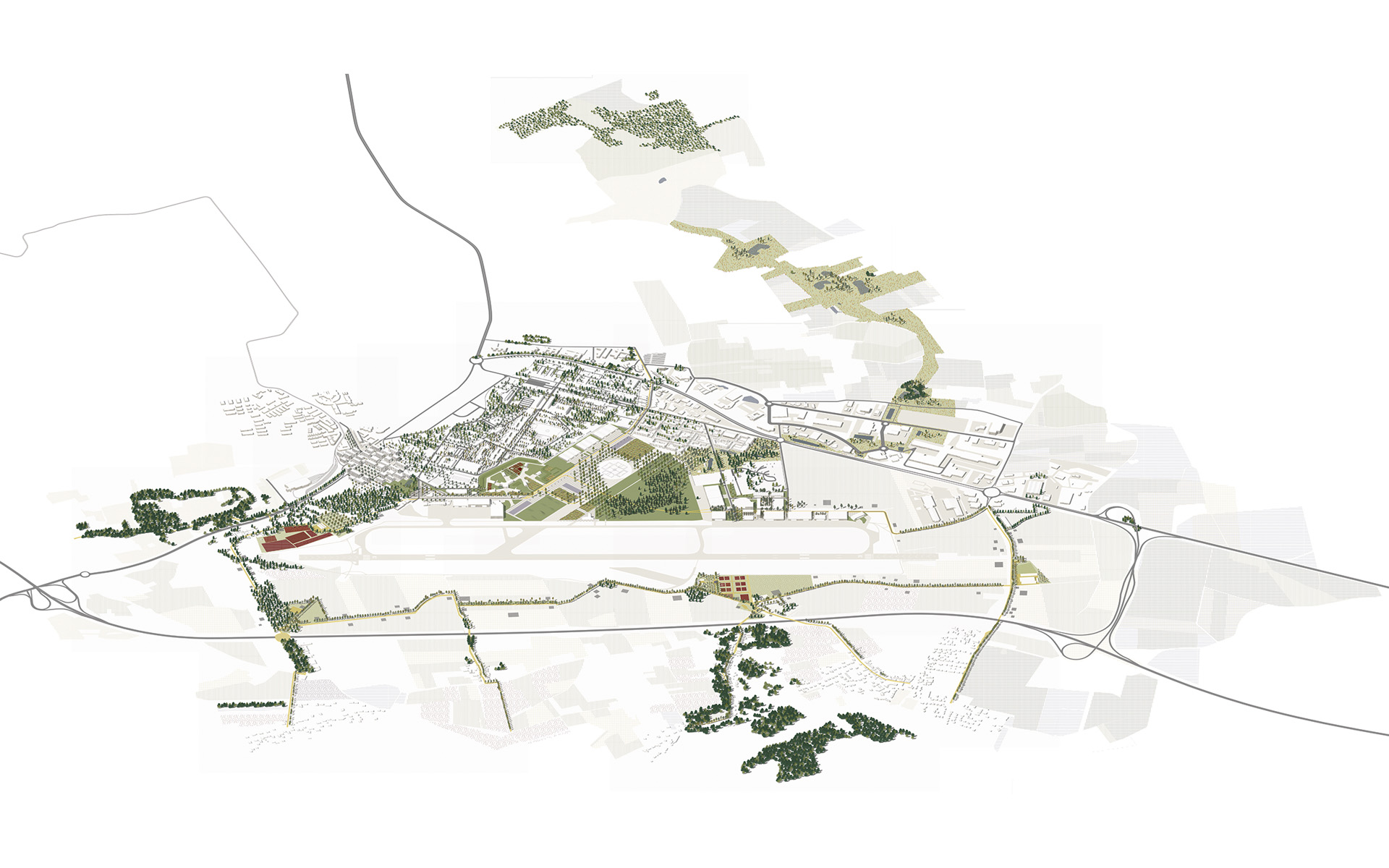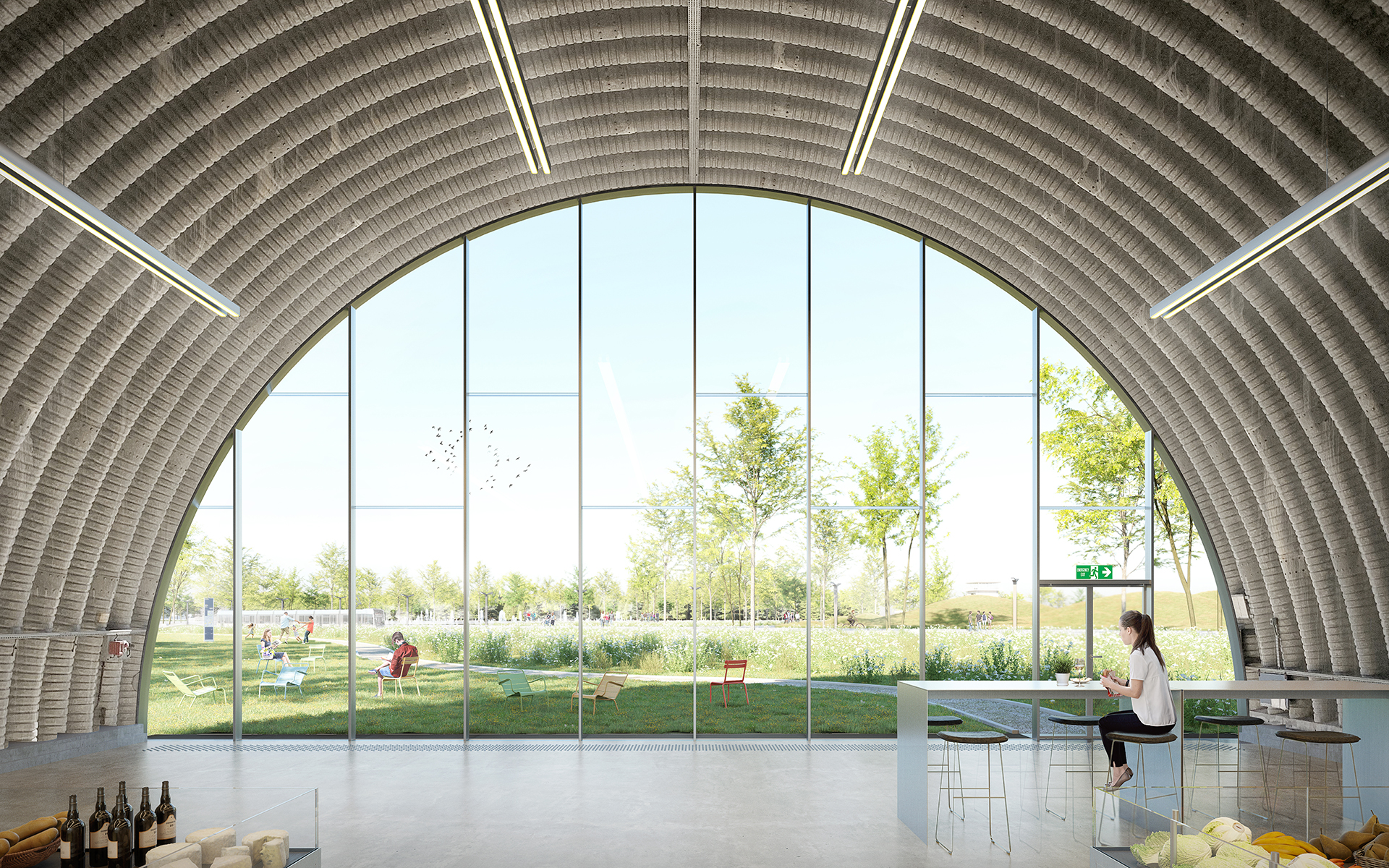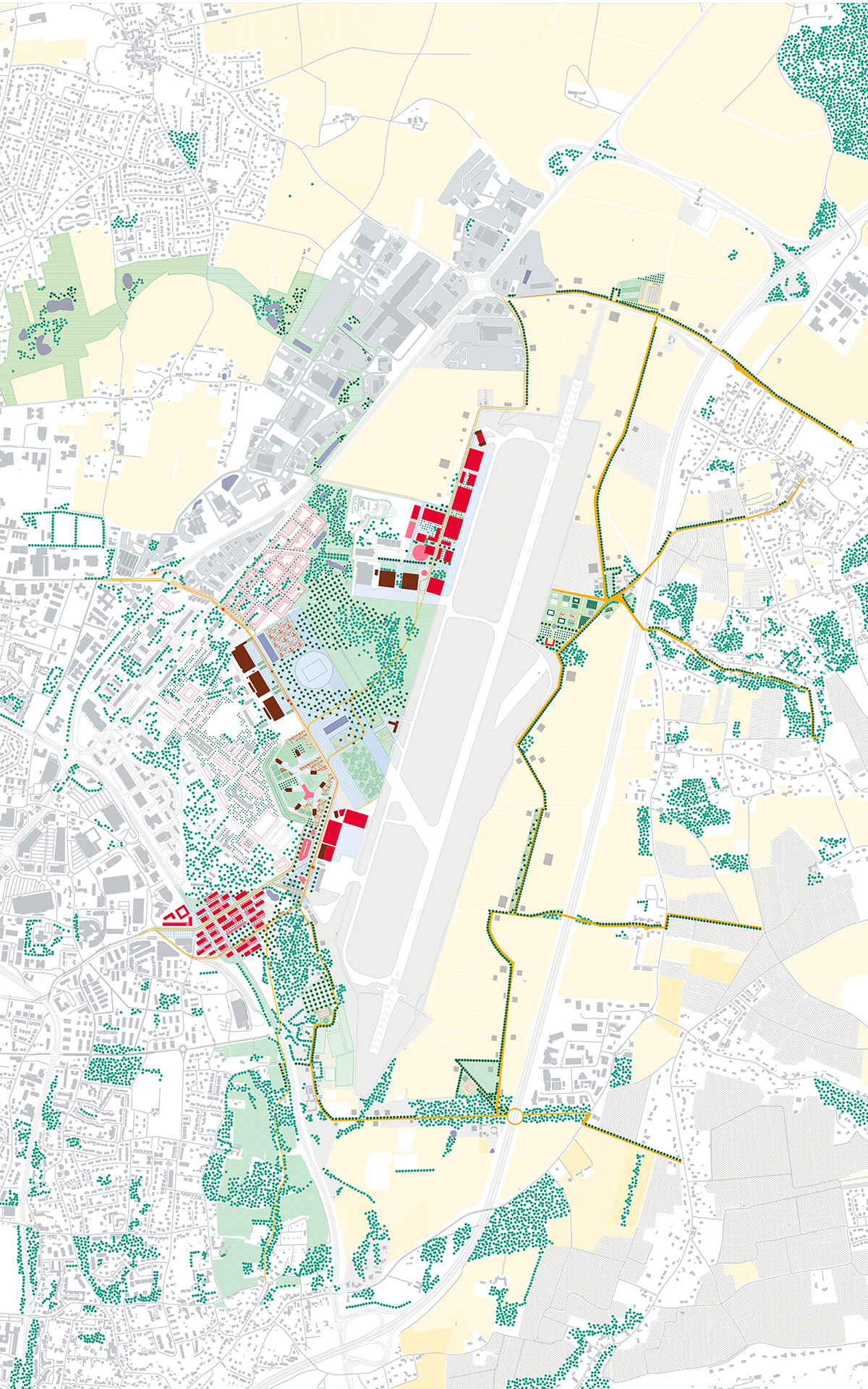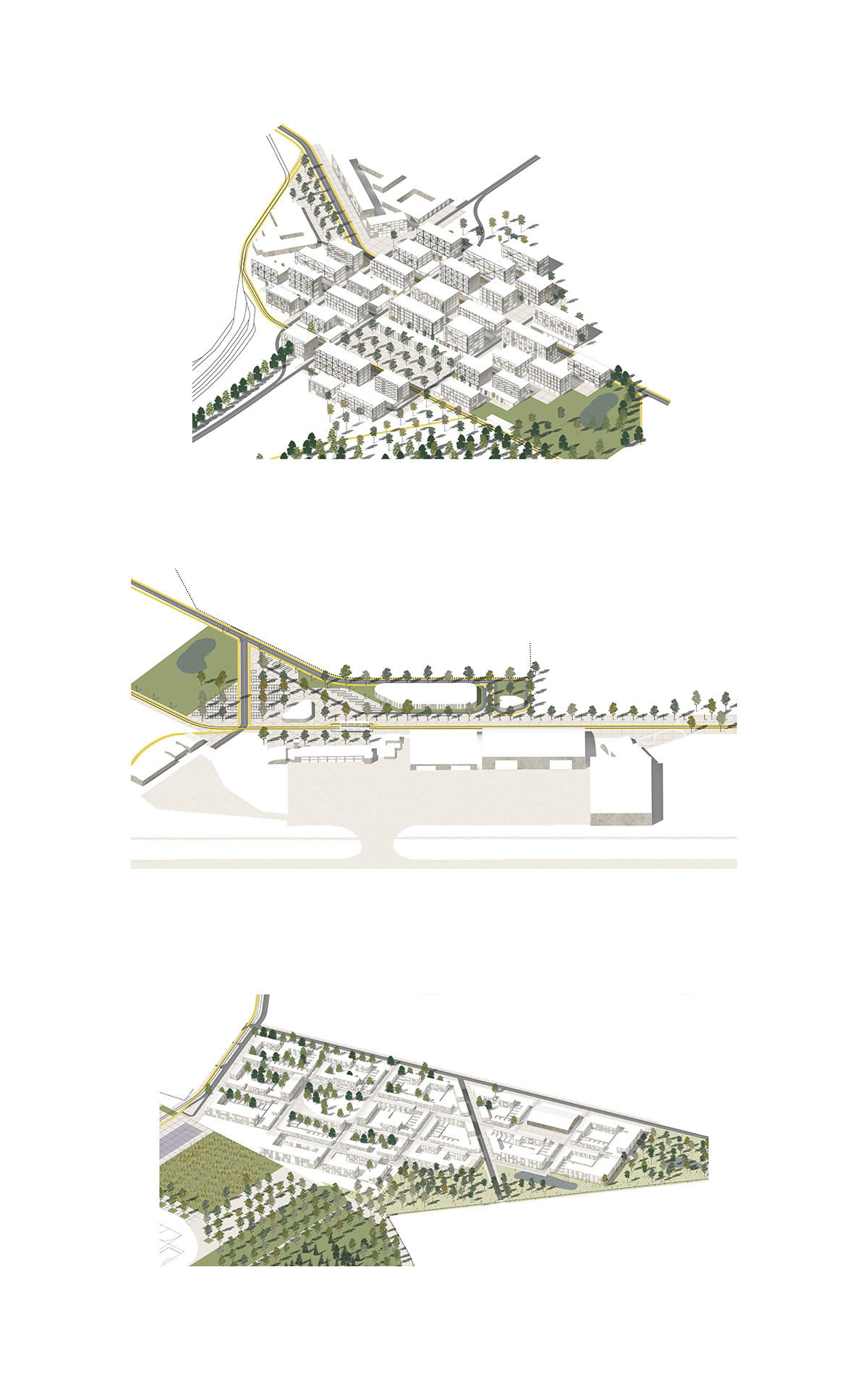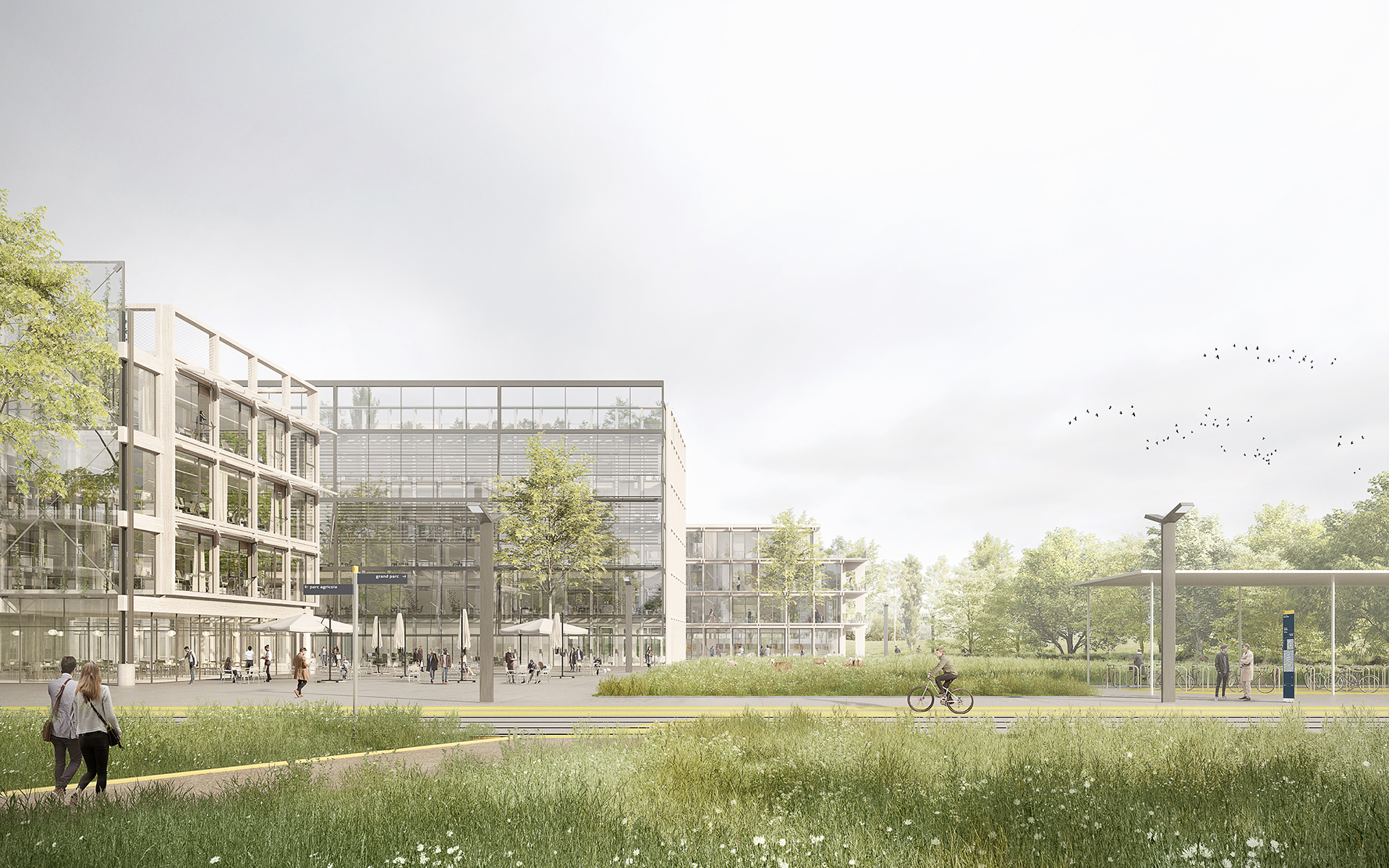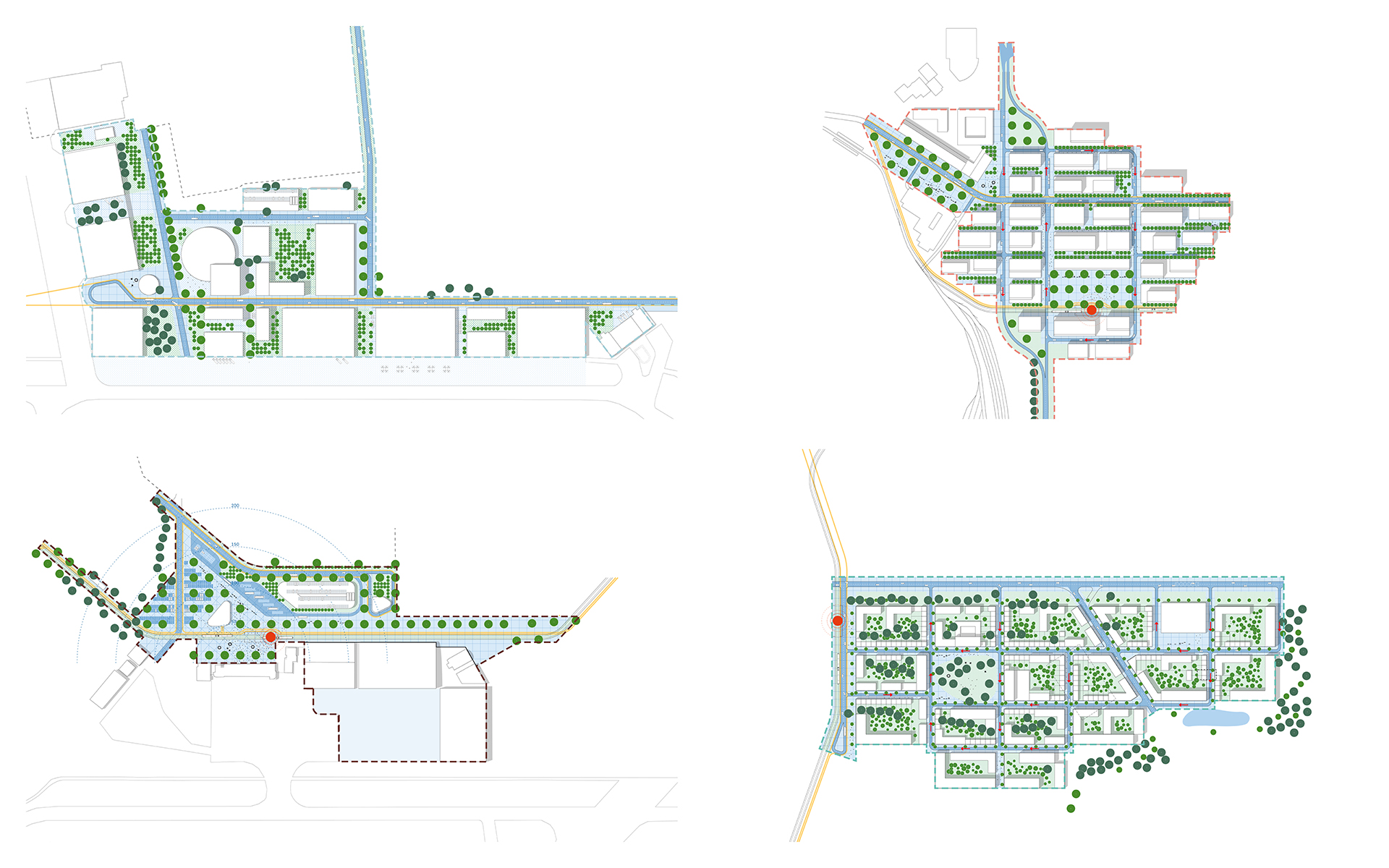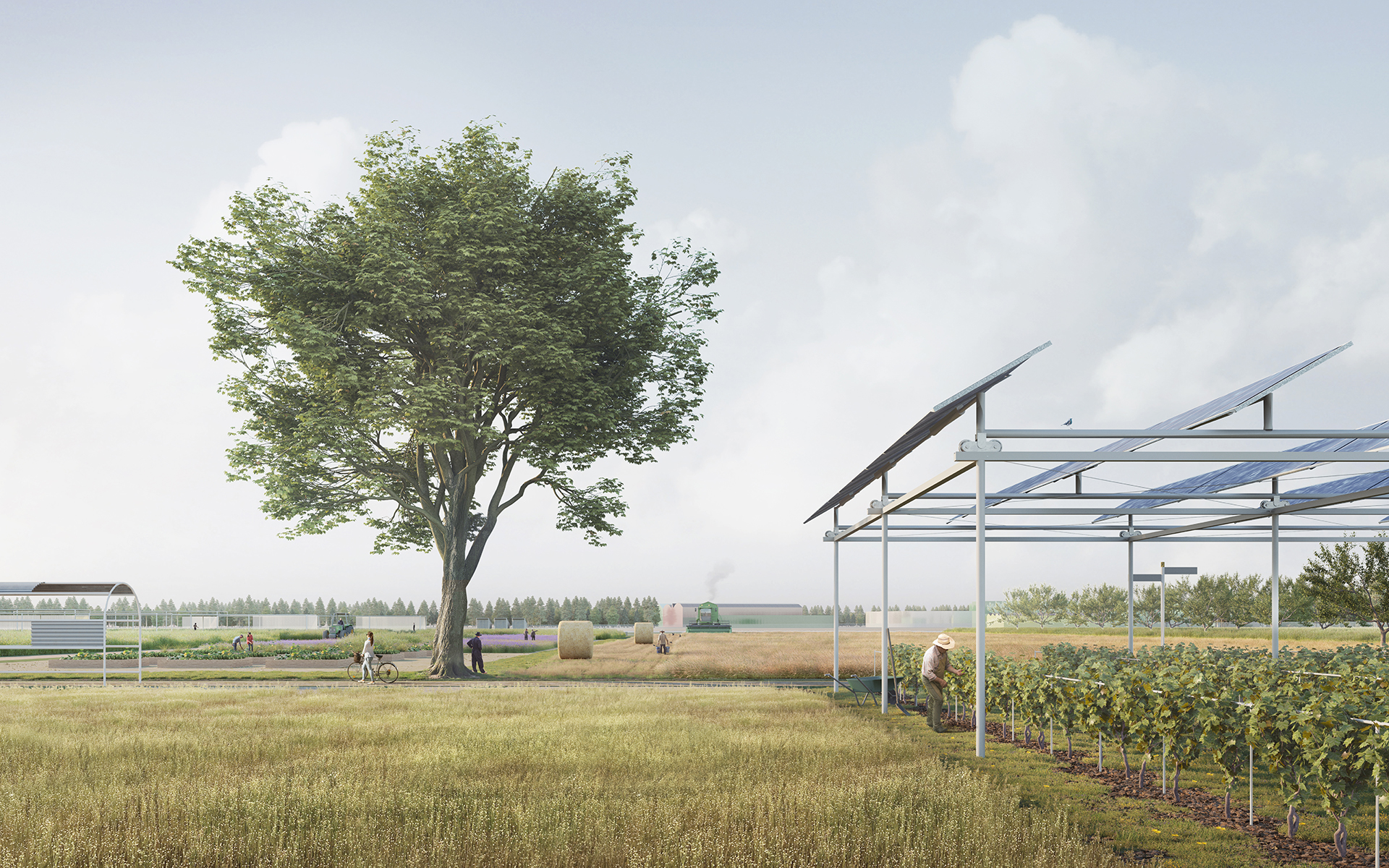After a year of competitive dialogue, the team led by Lafayette, in collaboration with KCAP, Etablissement, Elioth, Suez, Ville en Œuvre, Mint and E.Co, has won the 700-hectare masterplan for the area around Tours Val de Loire Airport in France, competing against two other international teams. The dialogue was launched by Tours Métropole on an inter-communal site surrounding the airport which served both as a passenger hub and a military base until 2021. It follows the transfer of aeronautical activities from the base and the return of 200 hectares of military land to the community. This land offers Tours Métropole the opportunity to rethink the entire airport area, and to include it in the urban renewal process yet under way in the north-east of the city.
The masterplan addresses a number of issues currently affecting the area. It proposes forms of urban development that accommodate a more natural use of land, aims to transform monofunctional industrial sites, wants to shed new light on mobility at the edges of the urban fabric, and looks to enhance the ecological continuity and biodiversity.
Tours Nord is characterised by the juxtaposition of large monofunctional, economic, commercial and residential areas and infrastructural divisions, typical features of 20th century planning. A new tramway has initiated a partial regeneration of the urban fabric, but it cannot succeed to improve the cohesion and sustainability of the area on its own. Tours Nord needs a new urban model, based on its intrinsic qualities.
The masterplan requalifies part of the air base’s tarmac into a large park, which will reinforce the existing green and blue network and revitalise the neighbourhoods around the site. The availability of land offers an unprecedented opportunity to develop a vast public space for current and future users. This unique park, based on the existing airport elements, will bring the city of Tours back to its historical garden tradition.
The park acts as a catalyst for new programs in its surroundings, meeting both the needs of the inhabitants and the military. A mixed-use district crosses the road infrastructure and links the airport area to the Hauts de Sainte-Radegonde neighbourhood. The redesigned airport parvis faces the park and offers new life for the historic aircraft hangars. A new residential district, served by public transport, complements the restructured military base. The brownfield site along the runway will become host to an industrial research centre, which is connected to a photovoltaic production network. This centre has the potential to become a privileged location for the regional green hydrogen S2E2 sector.
The park is part of a productive landscape “loop” around the airport. The existing agricultural land is a precious reserve, and contributes to Tours Métropole’s objectives for food autonomy and carbon neutrality by 2040. The urban plan preserves these fields in their entirety, guides them towards a transition of the current agricultural model and makes them accessible to the inhabitants of the city. Innovative green spaces will be the driving force behind the renewal of the airport area, improving the quality of life for the citizens of Tours Métropole.
